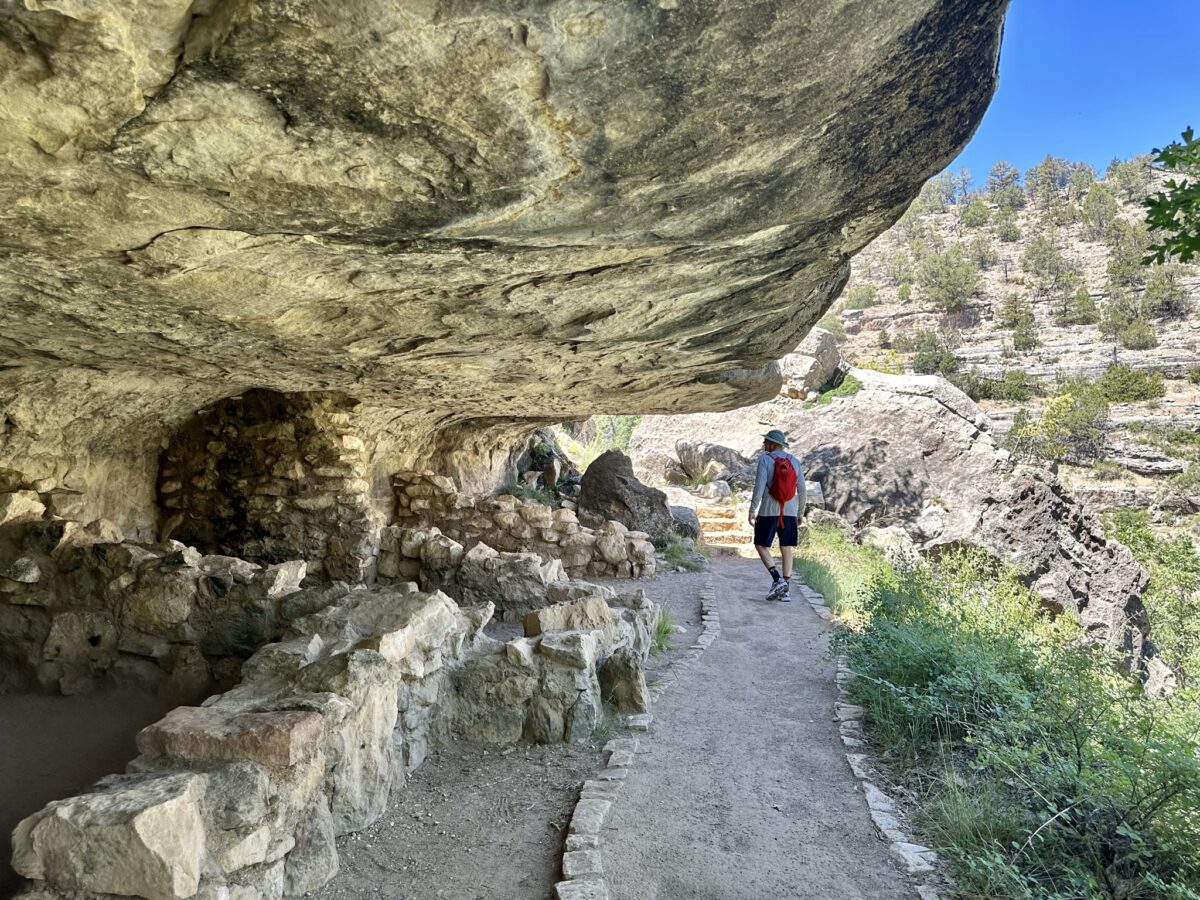A visit to Walnut Canyon National Monument lets you imagine yourself 700 years back in time when earlier people lived in cliff dwellings with incredible views. Check out the forested canyon, the cacti, and the blue sky. You might just fantasize about living here yourself.

The monument is 10 miles southeast of Flagstaff, Arizona. Archeologists refer to the 12th- and 13th-century inhabitants as Sinagua cave dwellers. But don’t mistake these folks for cavemen. People lived in a complicated and cooperative society in the canyon.
Their dwellings were very clever. They used what nature provided — back walls, floors, and leak-proof ceilings — in the rock alcoves. Then, they built thick side walls out of limestone blocks and mud, providing insulation and retaining heat in winter. They probably decorated their living spaces with rugs and hung animal skins over the small door openings facing the canyon.

Archeologists think the larger rooms were living spaces, and the smaller rooms stored water, food, and tools. They might have kept a 100-day water supply in large pottery vessels. Archeologists have recovered sandals, knives, and tools for making arrow shafts and pottery.
Walnut Creek created the surrounding 400-foot canyon. The cliff dwellings are naturally carved from Kaibab limestone. Early people added a hole to let smoke escape from their heating fires.

On a recent visit, the site felt very peaceful and quiet (despite quite a few visitors). There was little sound except the wind and an occasional passing bird. The one-mile Island Trail — paved, with stairs and handrails — descends 185 feet into the canyon. At almost 7,000 feet in elevation, it can be a little strenuous on the way back up, especially if you’re a sea-level dweller. Hike slowly, and be sure to carry some water with you. The trail is too steep for wheelchair users, and pets aren’t allowed.

Alternatively, you could take it easy and stay on the Rim Trail above, from which you can look down into Walnut Canyon. At the top, the monument has a nice interpretive center with a good selection of Arizona books.

